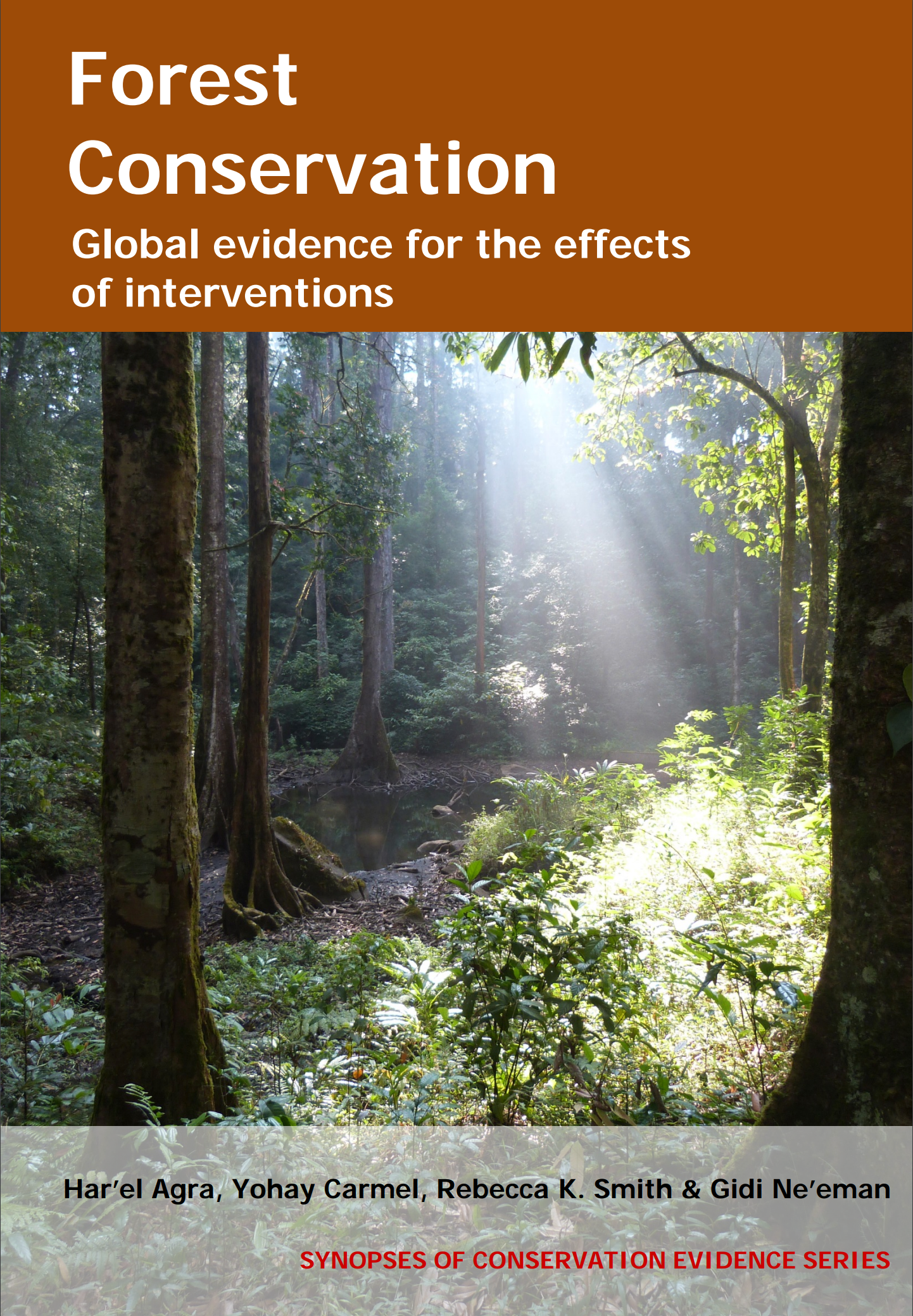Prevent livestock grazing in forests
-
Overall effectiveness category Trade-off between benefit and harms
-
Number of studies: 4
View assessment score
Hide assessment score
How is the evidence assessed?
-
Effectiveness
69% -
Certainty
45% -
Harms
20%
Study locations
Supporting evidence from individual studies
A controlled study in 1978-1984 in dry tropical forest in Brazil (De Albuquerque 1999) found that preventing cattle grazing decreased mortality of shrubs but not the density of tree seedlings. The average mortality over two years of five shrub species was higher in grazed (7.7-11.7%) than in ungrazed plots (4.5%). The number of tree seedlings (<0.5 m height) was similar in grazed (1.9-5.2 seedlings/m2) and ungrazed plots (5.8 seedlings/m2). Mortality of five selected shrub species: Lippia microphylla, Croton rhamnifolius, Calliandra depauperata, Cordia leucocephala and Bauhinia cheilantha, was calculated for 1980-1982 and for 1982-1984. Mortality data were collected in 6-10 plots (20 × 5 m) in each of three grazed (0.150, 0.100 and 0.075 cattle/ha) and one ungrazed treatment area (40-100 ha). Density of tree seedlings was determined annually in 1979-1984 in five quadrats (2 x 0.5 m) in each plot.
Study and other actions testedA site comparison study in 1996 in tropical dry forests in Costa Rica (Stern, Quesada & Stoner 2002) found that preventing livestock grazing increased plant species richness and diversity. The grazed site had lower numbers of species (grazed: 56; ungrazed: 84) and species diversity (Shannon's index grazed: 2.9; ungrazed: 3.5). Species richness and diversity were calculated using 150 individual plants identified along each of six 2 m wide transects in each ungrazed (since 1990) and grazed sites (grazed in May-January by 1.0-1.4 cattle/ha since 1991).
Study and other actions testedA replicated, controlled study in 2002-2003 in temperate broadleaf forest in Northern Ireland, UK (McEvoy, Flexen & McAdam 2006) found that preventing domestic animal grazing decreased plant species richness but increased the cover of some dominant species. The number of species within small plots (4 m2) was higher in grazed (14.0/4 m2 plot) than ungrazed plots (10.5/4 m2 plot), while within large plots (196 m2) the number of species (32.3-28.7/196 m2 plot) and species diversity (Shannon's index 1.6-1.4) was similar between treatments. Relative cover was lower in grazed than ungrazed plots for: bramble Rubus fruticosus (grazed: 3.9%; ungrazed: 9.6%) and bluebell Hyacinthoides non-scripta (grazed: 2.5%; ungrazed: 10.1%). Data were collected in 2002-2003 in one small quadrat (2 × 2 m inside 14 × 14 m plot) in each of 52 grazed (sheep, cattle, horses, goats) and 46 ungrazed sites across Northern Ireland (~14,000 km2).
Study and other actions testedA site comparison study in 2002 in subtropical dry forest in Israel (Dufour-Dror 2007) found that preventing cattle grazing increased the density of Tabor oak Quercus ithaburensis seedlings and young saplings. Density of young seedlings (<0.15 m height) and of young saplings (0.2 – 1.0 m height) in the grazed site was lower (seedlings: 4/ha; saplings: 14/ha) than in the ungrazed site (seedlings: 12/ha; saplings: 30/ha). Data were collected in 13 plots (333 m2) established in an ungrazed site (14 ha) and in 33 similar plots established in a grazed site (0.7 cows/ha; 458 ha).
Study and other actions tested
Where has this evidence come from?
List of journals searched by synopsis
All the journals searched for all synopses
This Action forms part of the Action Synopsis:
Forest Conservation
Forest Conservation - Published 2016
Forest synopsis





)_2023.JPG)














